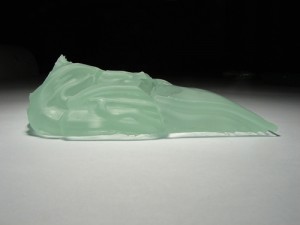Why is Glass Green?

Believe it or not, this is a relatively common question we get about glass. While most glass is tranparent when it’s thin, the thicker glass gets, the more it takes on a green tinge. Why? Ordinary glass, which is made of a soda-lime base (no petroleum required in this material), contains iron-oxide. For those of you into the chemical side, that’s FeO, also called ferris oxide. When thin, you don’t notice any color, but as this ordinary glass gets thicker, it takes on a green tinge from the iron-oxide impurities which are common. Now, certain green soda or wine bottles you see take on that green hue thanks to the iron oxide, but also to the addition of chromium-oxide which makes it even more colorful. On the opposite side, if you want to take out the green tinge to ordinary glass, you can add magesium-oxide.
Why is Glass Green? Read More »

